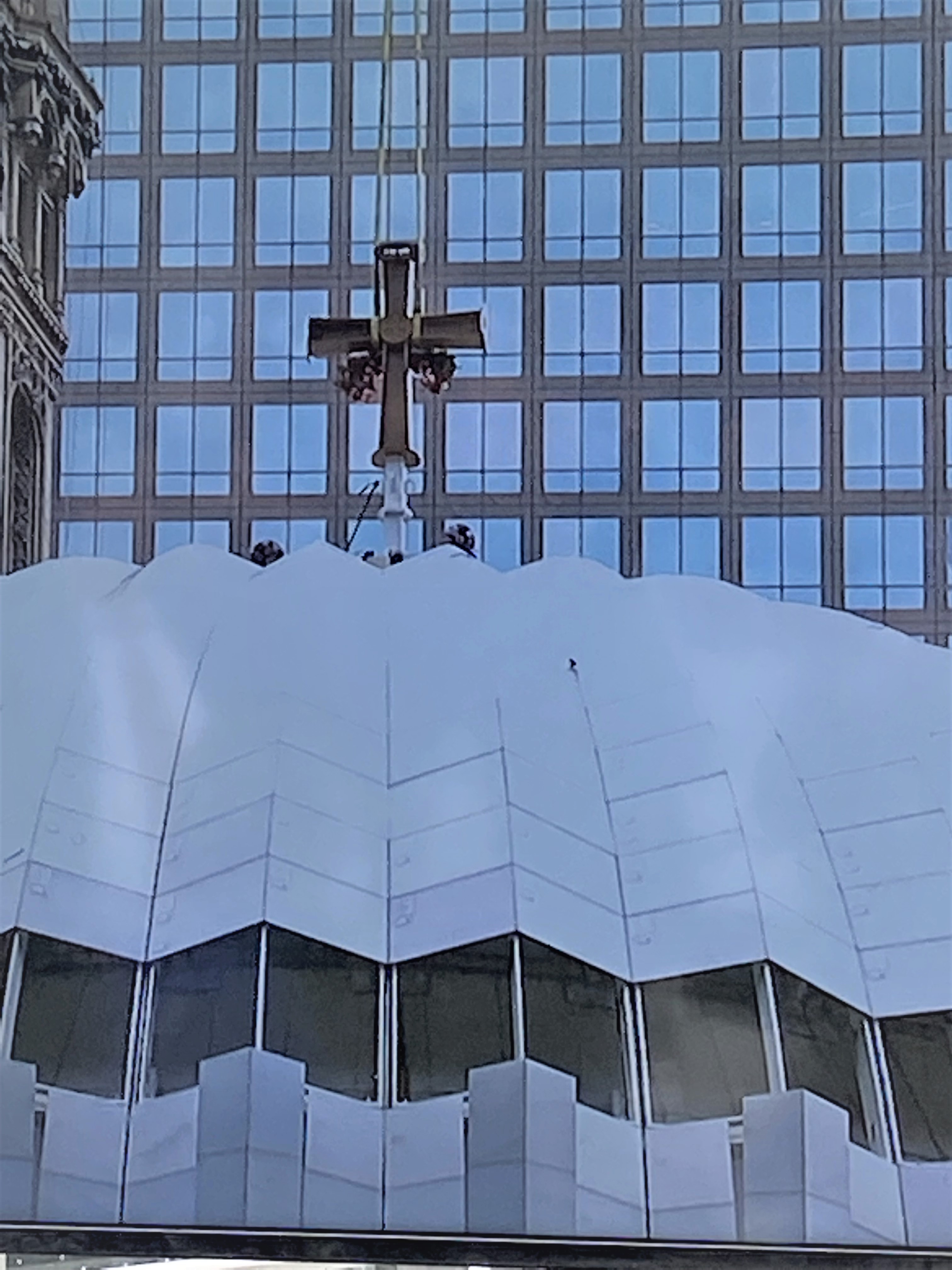By Dr. Tony Kireopoulos
Last week I was honored to witness a milestone event, with the service to “open the doors” of St. Nicholas Greek Orthodox Church and National Shrine at Ground Zero. The service was led by His All Holiness Ecumenical Patriarch Bartholomew, who was visiting the United States. While the church will not officially open until April of next year, when construction is completed, the moment was no less powerful and sublime.
The church rises in glistening white marble on a site overlooking the memorial reflecting pools, where the Twin Towers once stood, and at one end of Liberty Park, a garden plaza that includes the monumental sculpture, Sphere, that was damaged in the towers’ collapse. In this setting of quiet remembrance and profound meaning, the church draws the visitor forth into contemplation of both the horror committed on that day and the hope invested in the future. From the plaza, one can gaze past the reflecting pools and up at the soaring One World Trade Center, and certainly find inspiration from the gleaming new tower’s spire pointing heavenward. But on that day, and in that place, the eyes of everyone present were focused on the top of the dome, to where a construction crane slowly lifted a large bronze cross and workers silently – and no doubt prayerfully – secured it into place.
It is for such contemplation and prayer that this church has been rebuilt. As many will remember, the original Church of St. Nicholas was the only house of worship destroyed in the 9/11 attack. The new Church of St. Nicholas will of course serve as the home for its generations-old parish community. But now, as a national shrine, it will also serve as a place of prayer and reflection for people of all faiths and those of no faith. Yes, on that day the Ecumenical Patriarch and other clergy intoned prayers, and the choir chanted, in the Byzantine tradition. One can only imagine the prayers and hymns of other traditions to be lifted there in the hearts of many in the years to come.
At the start of the service, in his remarks the Ecumenical Patriarch answered a question I had had for years. As rebuilding plans were drawn up and development proceeded, I had wondered why the name of the church hadn’t been changed, to something more universally recognized for its symbolism. I imagined it being called, for example, the Church of the Resurrection, a name that would have emphasized the Christian belief in Jesus’ resurrection from the dead, the eternal rest of the souls lost in that space, and the literal rising of this place from the ashes of destruction. But as the Ecumenical Patriarch reminded everyone present, the name Nicholas means, in the Greek, “the victory of the people” (“Ni-ke la-oú”).
All at once, for me, the name was…perfect. St. Nicholas – the church and the shrine – would now stand as a testament to the resilience of humanity, the triumph of good over evil, and indeed the victory of life over death.
Dr. Kireopoulos is Associate General Secretary of the National Council of Churches USA.
About this blog: The views and opinions expressed in this blog are solely those of the original author and were prepared in the author’s personal capacity. These views and opinions do not represent those of the National Council of the Churches of Christ in the USA, its member communions, or any other contributors to this site.

